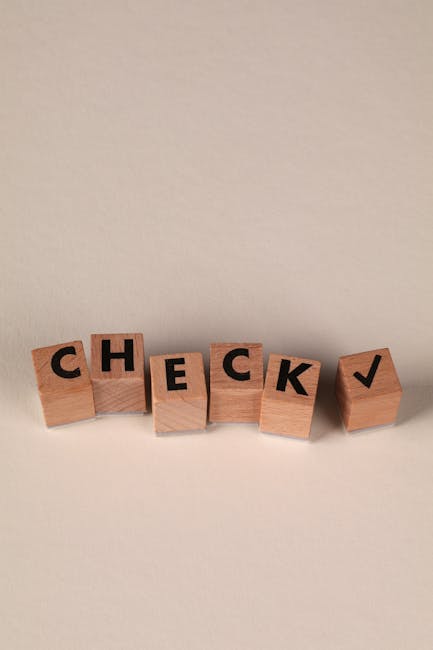How to Check Blocked Voicemails: A Comprehensive Guide for All Phones
The Frustration of Blocked Voicemails
We’ve all been there. You’re expecting an important call, and you see a missed call notification. But when you try to check your voicemail, nothing. The dreaded silence. The number might be blocked, or the voicemail itself might be inaccessible. This guide will walk you through the various methods of checking blocked voicemails, regardless of your phone type and operating system. We’ll cover everything from standard voicemail access to dealing with specific carrier settings and even exploring third-party apps that might offer solutions.
Understanding Why Voicemails Might Be Blocked
Before we delve into the how-to, let’s understand why you might be encountering blocked voicemails. Several factors contribute to this issue:
- Caller ID Blocking: The caller might have blocked their caller ID, making it difficult to identify the number and potentially preventing voicemail access.
- Carrier Restrictions: Your carrier might have specific settings that prevent access to certain voicemails, particularly those from blocked numbers or numbers outside your service area.
- Voicemail System Issues: Occasionally, issues with your voicemail system itself can lead to missed or inaccessible messages. This could be a temporary outage or a problem with your account.
- Phone Settings: Incorrect settings on your phone, such as voicemail settings or call blocking settings, can prevent you from accessing certain voicemails.
- Third-Party Apps: If you use a third-party calling app, its settings might override your phone’s default voicemail settings, leading to accessibility problems.
Checking Voicemails on Different Phone Types
1. iPhones (iOS):
Checking voicemails on iPhones is generally straightforward. The visual voicemail feature typically displays all messages, regardless of whether the caller ID is blocked. However, if you’re still having trouble, try these steps:
- Check your voicemail settings: Ensure your voicemail is set up correctly and that you have a functioning voicemail password.
- Restart your iPhone: A simple restart can resolve temporary software glitches that might be affecting voicemail access.
- Check for carrier updates: Make sure your carrier’s software is up to date. This can often fix underlying issues affecting voicemail service.
- Contact your carrier: If the problem persists, contact your carrier’s customer support for assistance. They can troubleshoot potential network or account-specific problems.
2. Android Phones:
Android phones offer a wide variety of voicemail experiences, depending on the manufacturer and carrier. However, most Android phones will allow you to check voicemails through the default phone app. Here’s a general approach:

- Access your voicemail using the phone app: Usually, there’s a dedicated voicemail button or icon in the phone app. Press it to access your messages.
- Check your phone’s settings: Look for voicemail settings within the phone app or your phone’s general settings. Ensure your voicemail number and password are correctly configured.
- Use your carrier’s voicemail app (if available): Some carriers have dedicated voicemail apps that offer enhanced features. Check if such an app is available for your carrier.
- Try a different phone: If possible, test accessing your voicemail using another phone to determine whether the problem is with your phone or your voicemail service.
3. Older Feature Phones:
Older feature phones might have a simpler voicemail system. Usually, you’ll need to dial a specific number (often a short code provided by your carrier) to access your messages. Refer to your phone’s manual or contact your carrier for the correct access code.

Dealing with Specific Carrier Issues
Your mobile carrier plays a significant role in voicemail access. Different carriers have different systems and settings. If you’re having persistent trouble, contact your carrier directly. They may be able to:
- Reset your voicemail password: If you’ve forgotten your password, your carrier can help you reset it.
- Check for account issues: They can check your account for any problems that might be affecting voicemail access.
- Diagnose network problems: If there’s a network outage or issue affecting voicemail services in your area, they can provide updates.
- Provide troubleshooting steps: They may have specific troubleshooting steps for your particular phone model and carrier service.
Exploring Third-Party Voicemail Apps
Several third-party apps offer enhanced voicemail management capabilities. These apps might provide features not available in your phone’s default voicemail app. However, be cautious when using third-party apps and ensure you download them from reputable sources to protect your privacy and security.
Preventing Blocked Voicemails in the Future
- Disable Caller ID Blocking: If possible, avoid blocking your caller ID when making important calls. This ensures better voicemail delivery.
- Ensure Correct Voicemail Settings: Regularly check and update your voicemail settings on your phone and with your carrier.
- Keep Software Updated: Update your phone’s operating system and carrier software regularly to benefit from bug fixes and performance improvements that might affect voicemail.
- Monitor Voicemail Service: Pay attention to any changes or disruptions in your voicemail service and contact your carrier promptly if you notice any problems.
Troubleshooting Common Voicemail Problems
Here are some common issues and their solutions:
- “Voicemail box full” message: Delete old voicemails to create space for new messages.
- Incorrect password: Reset your password through your carrier’s website or customer service.
- No voicemail access at all: Check your account status with your carrier to ensure your service is active and properly configured.
- Poor audio quality: Make sure you have a strong cellular signal. If the problem persists, contact your carrier.
Conclusion
Accessing blocked voicemails can be frustrating, but with a systematic approach and understanding of the various factors involved, you can usually retrieve your messages. Remember to check your phone’s settings, contact your carrier for assistance, and consider using a third-party app if necessary. By following the steps outlined in this guide, you’ll be well-equipped to handle any voicemail challenges that come your way.





